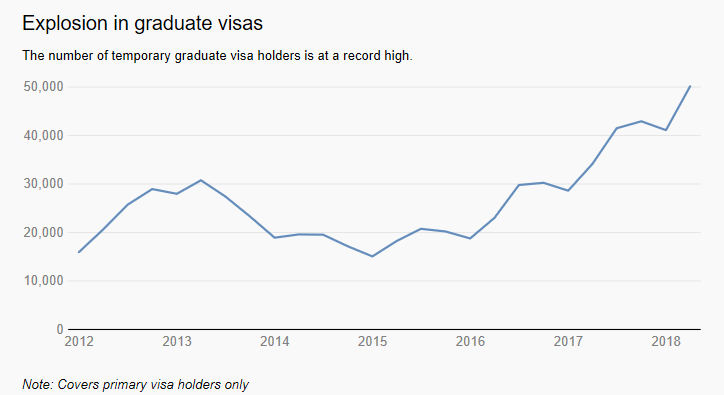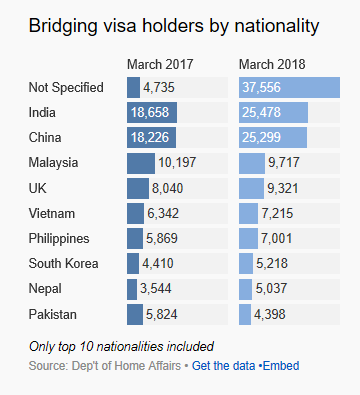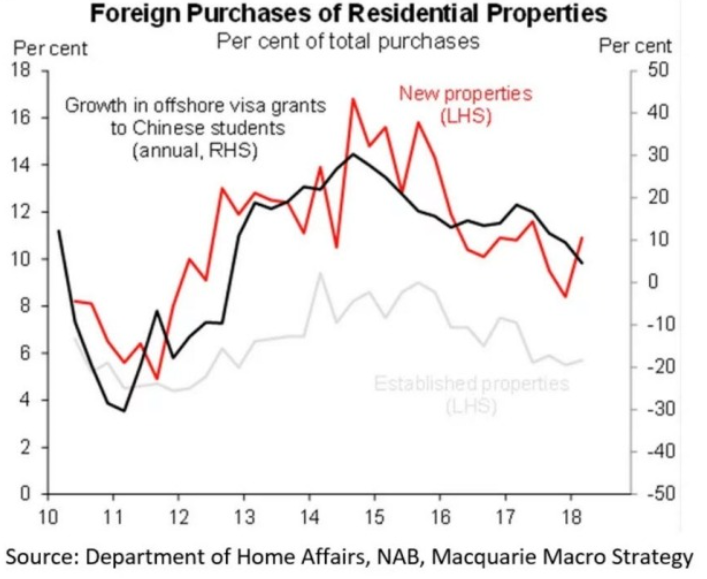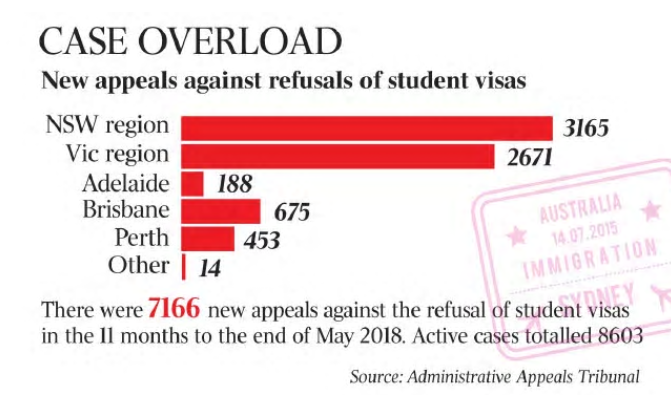Amid the explosion of foreign student visas with work rights, who are remaining in Australia for up to four years on graduate work visas following their studies:

As well as the ballooning in bridging visas, which have blown-out by 40,000 over the past year, as well as by 90,000 since 2014:

It has been revealed that foreign students have been ‘gaming’ Australian immigration system by appealing their decisions en masse to the Administrative Appeals Tribunal (AAT) to extend their stay:
A surge in appeals by foreign students against unfavourable visa decisions has contributed to a massive backlog of more than 43,000 active cases swamping the Administrative Appeals Tribunal.
The Australian has confirmed the case load at the tribunal’s migration and refugee division (MRD) has increased by more than 75 per cent — rising from 24,462 at the end of June last year to 43,159 at the end of May this year. The cases include appeals by overseas workers and refugee applicants, as well as students…
The number of outstanding student visa refusal cases before the tribunal at the end of May totalled 8603. This compared with 4394 active cases at the end of June 2017 — an increase of more than 95 per cent in a little under a year. The 8603 active student visa refusal cases represented 30 per cent of all active migration cases.
The Australian can reveal that the median time for the AAT to finalise a decision on the refusal of a student visa is 428 days. Foreign students are able to seek judicial review of any unfavourable decision in the Federal Circuit Court.
The AAT yesterday acknowledged it was increasingly unable to keep pace with its growing workload, telling The Australian the number of “members available to review decisions has not kept pace with this trend”.
The process of legal appeals can take several years to exhaust, prompting concern among some government MPs that the AAT backlog is contributing to overcrowding in capital cities as the national population last night ticked over 25 million.
Victorian Liberal MP Jason Wood, the chair of the joint standing committee on migration, said the backlog of cases at the AAT was “outrageous” and argued that the appeals process was “working in favour of the visa holder and not necessarily the Australian taxpayer”. He said foreign students could game the system to extend their stay by several years — an outcome which he said would deny Australian citizens more part time jobs.
The reality is that Australia’s education system has become an integral part of the immigration industry and Australia’s population ponzi – effectively a way for foreigners to buy backdoor permanent residency to Australia.
Dr Jenny Stewart, Honorary Professor of Public Policy at the University of New South Wales, drew the direct link between permanent residency and foreign student demand in her excellent article Hooked on Students:
If you work in a university, you cannot help but be aware of the extent to which universities are dependent upon income from international undergraduate students. Many of us working in the sector realised that it was not for any intellectual brilliance on our part that the students came, but because for many, coming to Australia as a student was a significant step on the path to becoming an Australian resident…
What do these undergraduate students do once they have completed their qualification? Many, understandably, wish to remain in Australia…
With appropriate advice and support and the necessary persistence, it would seem to be possible for just about any international student who is a graduate of an Australian university to become, eventually, a permanent resident…
In addition to creating competition for jobs at the entry level of the market, the boom in international students, particularly from China, is also having a deleterious impact on housing affordability, thus dealing a double-blow to Australia’s youth:

We need to switch the education sector from residency to pedagogical exports.
If permanent migration is capped, and appeals processes tightened, many more students will go home. The economy will adjust quickly with lower house prices and a lower Australian dollar. Thus the students will still come in droves for the value offered in Australian degree but without being so detrimental to wages, house prices and crush-loaded public services.


